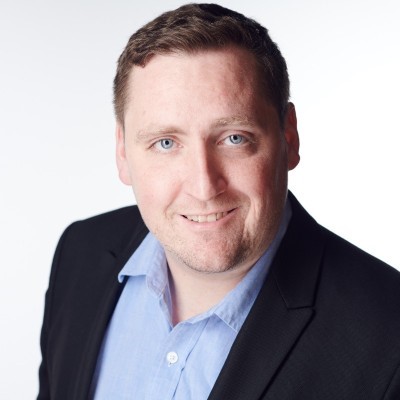EMBRACING DATA-DRIVEN SIGNAL PROCESSING IN COMMUNICATIONS SYSTEMS: END-TO-END LEARNING FOR COMMUNICATIONS SYSTEMS ALGORITHMS TO EXCEL IN THE REAL WORLD
When and How
Date: November 6th, 2020
Time: 12:00 pm – 1:00 pm Eastern Time
Location: Saint Maurice, Trois Rivieres, Quebec
ZOOM : https://uqtr.zoom.us/j/89805026456?pwd=bzluWlp0elY3clJzY0szYXpya2pZdz09
Meeting ID: 898 0502 6456 Password: 237973
ABSTRACT
Machine learning and deep learning tools have been rapidly advancing in capabilities over the past 7 years – they have transformed the fields of computer vision, speech, natural language processing, and control systems in complex environments by scaling to systems which can learn from massive sets of real-world data and feedback. More recently, in the past 4 years, radio signal processing and communications systems have been beginning to undergo this same transformation – from relatively compact analytic system and world models to rich data-driven representations of signals, impairments, channel phenomenon, and otherwise. Recent IEEE initiative such as the IEEE Machine Learning for Communications (MLC) Emerging Technology Area (ETI) have focused on highlighting and adapting ComSoc to some of these new challenging and embracing this approach for a number of problems.
Our work at DeepSig and Virginia Tech has focused heavily on transitioning data-driven baseband radio processing techniques for communications systems in point-to-point, mesh, 5G, and 6G systems to data-driven end-to-end learned models, and leveraging data-driven deep learning models for real-time sensing and sense-making of radio spectrum activity – consuming high rates of raw sensor data and turning it into useful analytics, mapping, anomaly detection, and real time information to enable scheduling and reactivity in the radio access network.
This talk will highlight key enablers which the communications society has begun to embrace, will discuss the trade-offs and pros and cons of model driven, data-driven, and joint model/data-driven methods for signal processing. We will highlight a number of key works in this area, highlighting where data-driven methods in communications are highly effective, and some areas where et hey are not. We will give a deep dive on how we are applying data-driven communications systems to several immediate and pertinent industry applications, speculate about where things are going, and how the fields of communications, signal processing, information theory, and machine learning will continue to co-evolve and lead to exciting new opportunities and research.
By Dr. Tim O’Shea, Co-Founder/CTO of DeepSig
Date and Time
Location
Hosts
Registration
-
 Add Event to Calendar
Add Event to Calendar
Speakers
 Tim O'Shea of DeepSig
Tim O'Shea of DeepSig
EMBRACING DATA-DRIVEN SIGNAL PROCESSING IN COMMUNICATIONS SYSTEMS: END-TO-END LEARNING FOR COMMUNICATIONS SYSTEMS ALGOR
Abstract
Machine learning and deep learning tools have been rapidly advancing in capabilities over the past 7 years – they have transformed the fields of computer vision, speech, natural language processing, and control systems in complex environments by scaling to systems which can learn from massive sets of real-world data and feedback. More recently, in the past 4 years, radio signal processing and communications systems have been beginning to undergo this same transformation – from relatively compact analytic system and world models to rich data-driven representations of signals, impairments, channel phenomenon, and otherwise. Recent IEEE initiative such as the IEEE Machine Learning for Communications (MLC) Emerging Technology Area (ETI) have focused on highlighting and adapting ComSoc to some of these new challenging and embracing this approach for a number of problems.
Our work at DeepSig and Virginia Tech has focused heavily on transitioning data-driven baseband radio processing techniques for communications systems in point-to-point, mesh, 5G, and 6G systems to data-driven end-to-end learned models, and leveraging data-driven deep learning models for real-time sensing and sense-making of radio spectrum activity – consuming high rates of raw sensor data and turning it into useful analytics, mapping, anomaly detection, and real time information to enable scheduling and reactivity in the radio access network.
This talk will highlight key enablers which the communications society has begun to embrace, will discuss the trade-offs and pros and cons of model driven, data-driven, and joint model/data-driven methods for signal processing. We will highlight a number of key works in this area, highlighting where data-driven methods in communications are highly effective, and some areas where et hey are not. We will give a deep dive on how we are applying data-driven communications systems to several immediate and pertinent industry applications, speculate about where things are going, and how the fields of communications, signal processing, information theory, and machine learning will continue to co-evolve and lead to exciting new opportunities and research.
Biography:
Dr. Tim O’Shea, Co-Founder/CTO of DeepSig
Tim is the Co-Founder/CTO of DeepSig, a venture backed startup building machine learning driven wireless capabilities and optimizing 5G RAN and Open-RAN deployments, and also serves as a research assistant professor at Virginia Tech in Arlington, VA. He previously worked with a USG lab on software and cognitive radio applied research technologies and rapid prototyping, helping build and lead the GNU Radio project, is a Co-Chair of the IEEE Emerging Technology Area on Machine Learning for Communications, an editor for Transactions on Wireless Communications and TCCN, Co-Chair for IEEE GlobeCom and IEEE ICC ML4Comms workshops in 2020, Chair of the GNU Radio Conference Technical Proceedings, and Co-author of over 50 peer reviewed conference and journal papers with over 3000 citations, over 20 patents, primarily focusing on the intersection of wireless communications and machine learning. Previously he was a technical consultant for Hawkeye 360, Federated Wireless, O’Shea Research, and at Cisco Systems. He has served as a technical advisory board member for programs at NSF, DARPA, EU HORIZON 2020, and DOD programs. He completed his PhD from VT ECE in 2017 and his BS/MS in ECE at NC State in 2007.

